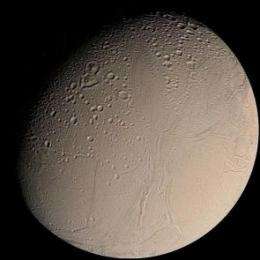August 10, 2009 weblog
Mini Gradiometer Could Map Other Planets' Gravity Fields

(PhysOrg.com) -- Although it may seem like gravity is the same everywhere on the Earth, it actually varies a small amount from place to place. Factors such as mountains, ocean trenches, and interior density variations can all cause gravity differences. By measuring the gravity field of Earth or another planet, scientists can gain insight into that planet's otherwise hidden geological features.
Recently, Jaap Flokstra and colleagues from the University of Twente in Enschede, the Netherlands, have designed a miniature gravity gradiometer that can map a planet's gravity field. The device is a much smaller version of a gravity gradiometer called GOCE (Gravity field and steady-state Ocean Circulation Explorer), which is a European Space Agency satellite that is currently orbiting and measuring Earth's gravity field. While GOCE has a mass of several hundred kilograms, the new mini gradiometer weighs just one kilogram.
As the scientists explain, the mini gravity gradiometer is made of a single wafer of silicon. The design consists of two masses, each hanging on a spring a few centimeters part (compared with half a meter in GOCE). Whichever mass is slightly closer to a planet's surface will feel a stronger pull on its spring compared to the other mass, allowing researchers to determine the gravity gradient. In the new design, the position of the masses is measured to within 1 picometer by a device whose capacitance changes as the masses move up and down.
Flokstra and his colleagues hope that the new lightweight design would be more practical and cheaper to send into outer space for investigating the gravity fields of other planets in our solar system. For instance, such a device could search for the subterranean ocean suspected to exist near the South Pole of Saturn's moon Enceladus. The researchers calculate that the device could have a high sensitivity, with the ability to sense changes in a planet's gravity field due to geological features of about 200 kilometers across or more. The researchers plan to build and demonstrate the device to use on Earth in the next few months.
via: New Scientist
© 2009 PhysOrg.com




















